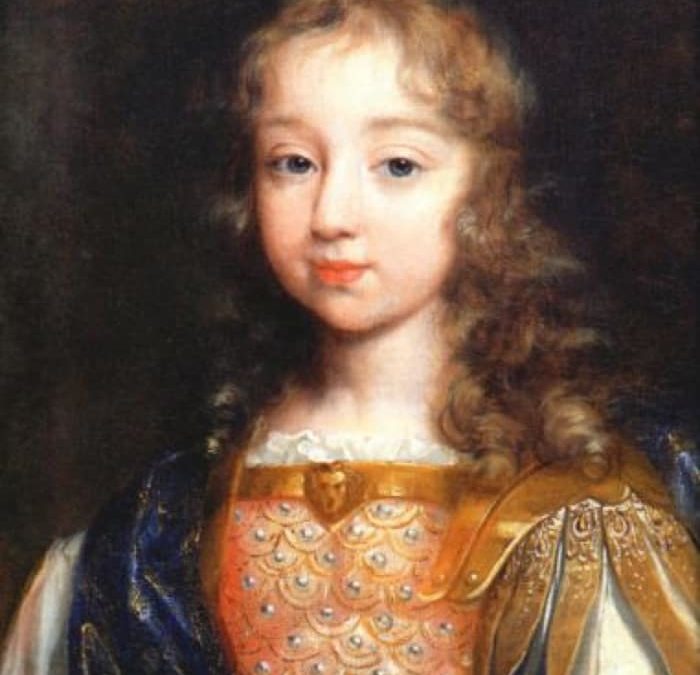
by Sandra Gulland | Jun 30, 2012 | Baroque Explorations, On Research, The Sun Court Duet |
A reader asked about Louis XIV’s father:
Has anyone given serious consideration to the possibility that Henri d’Effiat, Marquis de Cinq-Mars, was the biological father of Louis XIV?
Richelieu went to his close friend D’Effiat specifically to bring his handsome 18-year-old son into the court. Cinq-Mars was given the title “master of the wardrobe” which provided him access to the royal bedroom.
One year later, Anne was with child. Cinq-Mars was accused of conspiring against the king (with Anne) and beheaded.
Cinq-Mars also was, coincidentally, “the Favorite” in the biblical sense with the gay Louis XIII.
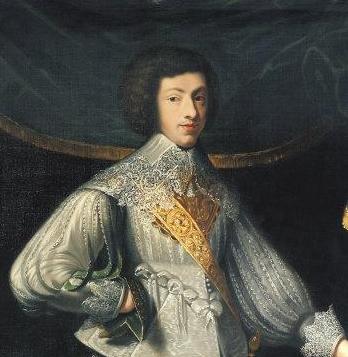
Henri de Cinq-Mars
My go-to-person for questions regarding Sun Court history is historian Gary McCollim. He generously provided this answer:
The answer to the question is simple:
No one ever accused Cinq-Mars of being Louis XIV’s father because of a simple matter of dates.
Louis XIV was born on 5 September 1638. Doctors had estimated in January that the queen was six weeks pregnant which meant that conception took place in late November 1637. The king and queen had been at Saint-Germain-en-Laye throughout the month of November and returned to Paris on 1 December. Doctors expected the child’s birth sometime between 23 to 28 August 1638.
Henri de Cinq-Mars was not appointed master of the king’s wardrobe until March 1638 when the queen was already pregnant.
While the appointment might have given Cinq-Mars access to the king’s bedroom, it did not give him access to the queen’s bedroom. Also, Anne of Austria for reason explained below was reluctant to join any conspiracy after the birth of her son. Some sources say she may even have been instrumental in exposing the Cinq-Mars conspiracy to Richelieu.
No serious historian today thinks that Louis XIV had any other father than Louis XIII.
Documentary evidence shows that Louis XIII and his wife, Anne of Austria, made up their differences in August 1637. Anne confessed to her participation of in some of the plots around the throne and of communicating with her brother the king of Spain. She promised to cease such behavior. Her near brush with disgrace persuaded her to abandon her plots and become the wife of her husband in fact and deed, so to speak. Louis XIII was convinced by Richelieu that the plotting would continue as long as he had no male heir. Thus, marital relations resumed between the two people in late summer 1637. The king had dedicated his kingdom to the Virgin Mary in February 1637 while praying for a male heir.
It has been fashionable among people today at a time when gay rights are in demand to think of Louis XIII as a homosexual and thus imply that he was somehow unable to father a child. We know that is not true. In fact, he was bisexual. He did have female favorites to whom he was loyal as well.
In any case, after the birth of Louis XIV the royal government put out the propaganda that his birth was miraculous, a result of prayers and supplications to God and the Virgin Mary.
Louis XIV was given the name Dieudonné (God-given).
There were many people who were surprised that the queen had gotten pregnant when she did, but no one at the time accused her of any improper behavior. There were people, such as the king’s brother Gaston and his cousins the Condes who had strong reasons to be wary of a surprise pregnancy as they were the heirs to the throne. Louis XIV’s birth pushed them further back in the line of succession.
Yet, Gaston and the Condes never made any accusations about Anne of Austira’s surprise pregnancy at the time or later during the Fronde.
A story emerged of the king Louis XIII being trapped in a terrible rainstorm on the night of 5 December 1637 and being forced to seek shelter in the Louvre where the only bed fit for the king was Anne of Austria’s.
Thus, implying that the conception took place that night. There is no proof that this story is true. Yet, it lives on in the popular imagination, plays have been written about it. In any case, Louis XIV grew up surrounded by this myth of his miraculous conception.
In the 1690s, however, when France was at war with all of Europe, his enemies the Dutch began to question the story and insinuated that Anne of Austria (who had died in 1666) had gotten pregnant from a man other than her husband.
One propaganda piece said the father was someone with the initials Le C. D. R. meaning Cardinal de Richelieu. Soon other candidates were accused of being the real father. Cardinal Mazarin was accused (he had died in 1661) but documentary evidence shows that he was in Italy from 1636 until 1640. Since the 1690s, historians have blamed other people, some famous like the Duke of Buckingham (died 1628) or the Duke of Beaufort (died 1669), and others less well known to be Louis XIV’s real father.
This whole story shows the power of propaganda to drive people’s imaginations without a shred of historical evidence.
In any case, Cinq-Mars has never been named as a possible father for the reasons I showed above.
Books that can shed light on this subject are:
Jean-Vincent Blanchard, Eminence (2011)
A. Lloyd Moote, Louis XIII, the Just (1989)
Ruth Kleinman, Anne of Austria, Queen of France (1985)
Claude Dulong, Anne d’Autriche (2000)
Jean-Christian Petitfils, Louis XIII (2008)
Gary is the author of: Louis XIV’s Assault of Privilege: Nicolas Desmaretz and the Tax on Wealth, published by the University of Rochester Press/Boydell & Brewer.
 His book discusses the difficult situation of royal finances at the end of the reign of Louis XIV, and how the king was forced to turn to Nicolas Desmaretz, a man who had been dismissed from the royal government in 1683 following the death of his uncle, the great Colbert.
His book discusses the difficult situation of royal finances at the end of the reign of Louis XIV, and how the king was forced to turn to Nicolas Desmaretz, a man who had been dismissed from the royal government in 1683 following the death of his uncle, the great Colbert.
Desmaretz had been critical of the royal government’s policies that increased the tax burden of the poorest elements of French society. He returned to the French government in 1703 as an assistant to the finance minister and became finance minister himself in February 1708. The book shows how Desmaretz and his staff were in contact with reformers and advocates of new policies. Out of this atmosphere of declining tax revenues, increasing defeats in the War of the Spanish Succession, and the refusal of France’s enemies to make a reasonable peace offer, Desmaretz decided to create a tax on the income produced by the ownership of property, in other words, a tax on the wealthiest elements of French society, to provide the funds necessary for France to survive the war and bargain for a reasonable peace.
After the war, Desmaretz was working to alleviate France’s debts in a way that could have changed the history of the eighteenth century except that Louis XIV died and Desmaretz was dismissed as the government turned to riskier schemes that boxed the royal government in for the rest of the eighteenth century leading to the Revolution.
About the author: Gary is a retired former employee of the US federal government He was educated at Muskingum College and received his doctorate in history from The Ohio State University studying under John C. Rule, a recognized expert on Louis XIV.
As always: thank you, Gary!
See also: The conception of Louis XIV.
by Sandra Gulland | May 20, 2012 | Baroque Explorations |
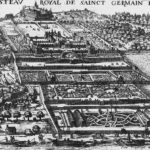
It’s annoying to have to change a location of scenes in the 7th draft of a novel. I’ve housed Louis XIV’s two mistresses in the old château in Saint-Germain-en-Laye: it’s an ancient castle-like fortress with a moat, turrets and all the trimmings.
I’ve visited it a number of times. There are two side-by-side chambers there that are said to have been those of Louise de la Vallière (the Sun King’s mistress #1) and Athénaïs, Madame de Montespan (the Sun King’s mistress #2). Voilá. And so it has been in both Mistress of the Sun and The Next Novel.
Gary McCollim, my wonderful historical consultant (familiar to many readers of this blog), pointed out that the King and Court were housed in Le Château Neuf, however—the “new” chateau (of which only remnants exist today).
Had I set my scenes in the wrong château? Did I need to rewrite? (Groan.)

The New Château
The sprawling Château Neuf opened onto glorious view of the Seine river valley. It was enlarged and completed by Henry IV (who conveniently housed all his children—legitimate and illegitimate both—in the old castle).
Louis XIII, the Sun King’s father, died in the newer residence, and his sons were born there. Clearly, it was the royal residence.

A timeline recap:
1648: During the French civil war called the Fronde, members of the royal family took refuge in Saint-Germain several times.
September 13, 1648, the Queen and her children stayed in the old chateau, possibly because it was more of a fortress, more secure. Neither residence was furnished, however, and the furnishings sent on from Paris were intercepted and looted.
A few months later, the King’s cousin, the Duchess of Montpensier, also came to Saint-Germain seeking asylum, installing herself at Château Neuf where “she lay in a wonderfully beautiful chamber in a ruined tower, well-gilded and large but with no glass in the windows and a meager fire.”
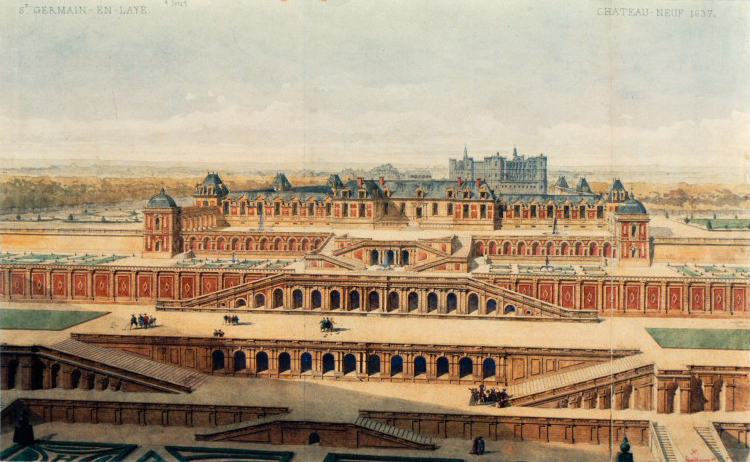
1660: One of the newer château’s retaining walls collapsed in 1660, and the King had the massive gardens renovated in 1662.
1668: the Court set off from the Château Neuf for the baptism of the Grand Dauphin in Sainte Chapelle of the Château Vieux.
1680: Mansart expanded and modernized the Château Vieux.
1682: the Court left Saint-Germain for Versailles, which became the seat of government.
1688: Louis XIV allowed the exiled James II of England to base himself at Saint-Germain. Some say James II took over the old castle, others that he and his court stayed in both.
So where does this all leave me, other than down the proverbial Research Rabbit Hole?
Do I relocate my scenes?
No: Because, with some rummaging around in my library, I discovered that two of the children Madame de Montespan had by the King were born in the old castle: Louis-August, Duc du Maine, in 1670, and Françoise-Marie, Mlle de Tours, in 1674.
All of which leads me to suspect that the mistresses—Louis de la Vallière and Madame de Montespan—were likely housed apart from the royal family in the old castle, at least some of the time.
However, like all research, this matter will be on-going … until publication, that is. Weigh in!

For an interesting paper on Le Château Neuf—including a floor plan (!) — see Le Château Neuf de Saint-Germain-en-Laye, une Villa Royale pour Henri IV by Emmanuel Lurin.
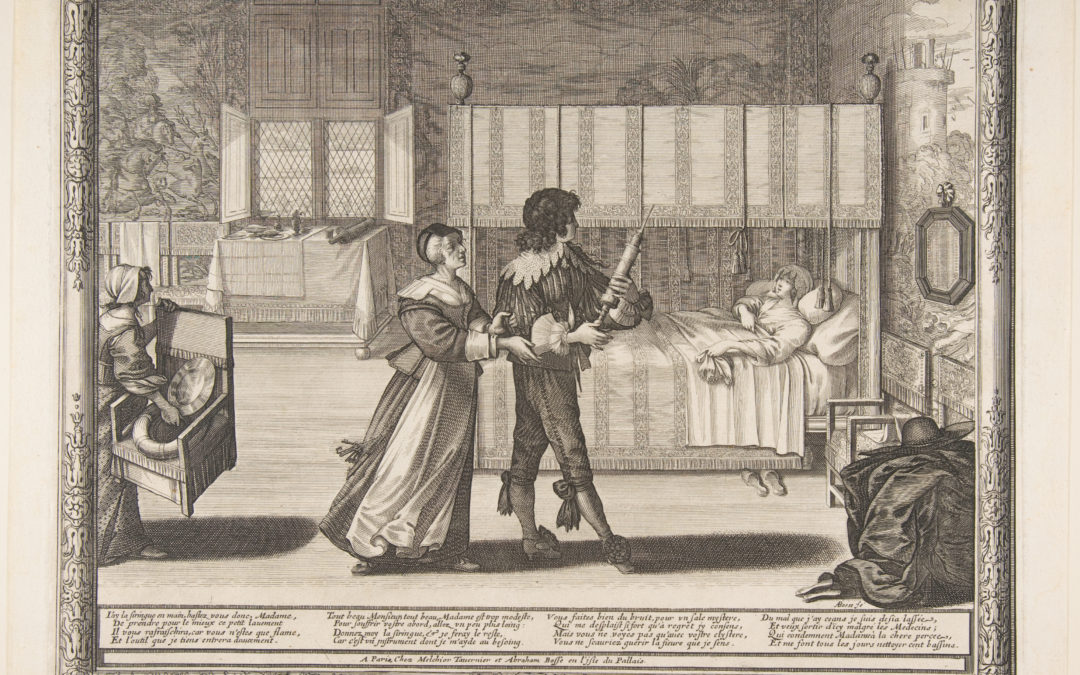
by Sandra Gulland | Apr 4, 2009 | Baroque Explorations, On Research, The Sun Court Duet |
.In an earlier post, I mentioned the false allegations that 1) Louis XIV only bathed twice in his life, and 2) that he had 2000 enemas. Louis XIV did bathe, and although he had a monthly enema and bleeding (believed to expel bad humours), he certainly could not possibly have had 2000.
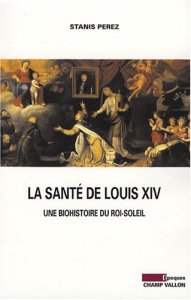
Gary McCollim, who I often quote here, has this to say:
Your blog had a note on 30 March about an article claiming that Louis XIV only bathed twice in his life. Stanis Perez who has written a book entitled La Santé de Louis XIV (Champ Vallon, 2007) says that this story is often repeated and is not true (p. 241). The king often bathed on orders from his doctors whenever he was sick. As a youth he often went swimming in the rivers. An bath was installed at Versailles in 1672. I could go on, but the story never dies. His grandfather Henri IV, however, was known to smell like a goat because he rarely bathed but this too might be a false story.
As to the number of enemas the king had, once a month he pris médecin. This meant a bleeding and an enema, what was called a lavement. Lavements were regularly prescribed for various illnesses. As to the number 2000, he would have to have lived 166 years to have one once a month or to have been ill many, many times. Whether he held court or received people or not, he continued his regular activities on these days. Everyone at court knew that the king was taking his medicine on these days.
Saint-Simon tells a story that the duchesse de Bourgogne, the favorite of the king and Maintenon, actually had an enema inserted while she was in the presence of the king and Maintenon. Maintenon was shocked, according to Saint-Simon, but the story left me with the impression that this was some sort of thrill for the youth of that day to see how long they could……. Kind of like kids today and glue sniffing or whatever.
I’ve read the story of the duchesse de Bourgogne before, and the logistics of the act perplex me. I’ve also read an account of a woman who liked her lover to give her enemas rather too often. Clearly, there is more to this than we know!
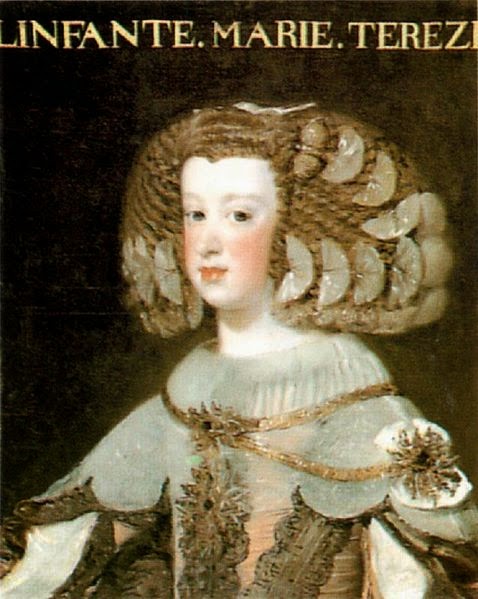
by Sandra Gulland | Mar 16, 2009 | Baroque Explorations, The Sun Court Duet |
Much has been written about the possibility that Louis XIV‘s wife, the Queen, gave birth to a black baby, a daughter. Needless-to-say, this has given rise to a number of salacious rumours.
The play Las Meninas
Lynn Nottage, author of the play Las Meninas, writes about the spark for the play, read an essay about the African presence in royal families. In this essay was a paragraph that mentioned a romance between an African dwarf and the Queen Marie Thérèse of France.
Nottage spent close to eight years researching this and came to the conclusion that the story was true: that in 1661, the Queen had a romance with an African dwarf named Nabo, and gave birth to a black baby, a child named Louise Marie, “who was whisked from the palace and sent to a convent where she spent her entire life, first as a novice and then a nun. She did not take vows until she was much older.”
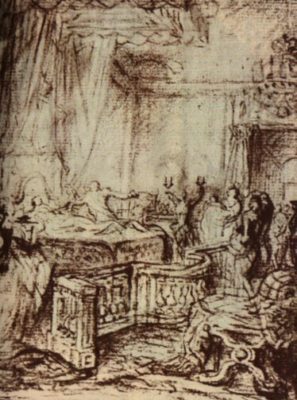
What we know …
One thing is certain: the Queen would not have given birth privately. There would have been witnesses. Author Catherine Delors has written a wonderful account of Marie Antoinette having to give birth in an all-too-public manner on her blog, Versailles and more, some of which was also posted to Wonders and Marvels, a blog on the 17th century.
According to sources …
Gary McCollim, a historian I often quote here, weighed in on this rumour of a black daughter recently. First, he examined the sources often quoted:
1) Cardinal Dubois was not an eyewitness and he might not have written his memoirs.
2) Voltaire was definitely not an eyewitness. He was born in 1694 and the so-called black daughter was born in 1664.
3) Saint-Simon was not an eyewitness as he was born in 1675.
4) The memoires of the marquise de Montespan were not written by La Montespan but by a male writer after she had died.
5) Thus, the only eyewitness might have been the duchesse de Montpensier, Louis XIV’s cousin who was called La Grande Mademoiselle. However, her memoirs only say that the queen gave birth prematurely to a child who was very dark.
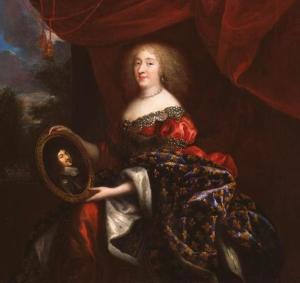
La Grande Mademoiselle
We do have some other evidence about this child. Madame, Louis XIV’s sister-in-law, wrote that her husband Monsieur who was an eyewitness said that the female child born in 1664 was not black but very ugly. Madame went on to say that no one could get the idea out of people’s heads that the child was still alive and was living in a convent at Moret near Fontainebleau. In any case, Madame wrote, it is certain that the ugly child died. All the court had seen her di
Then, we also have copies of letters that Louis XIV wrote to tell the rest of sovereign Europe of the death of his daughter on 26 December 1664.
And finally, we have several sources that report that Louis XIV had a Maurish coachman with a pretty wife. They had a child that the king and queen acted as godparents for. When the child’s parents died, Madame de Maintenon had the child put into this convent. As goddaughter to the king and queen, this child might refer to the Dauphin as her brother.
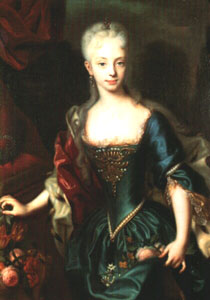
Marie Therese
Gary posted more on this mystery after reading a recent biography of Queen Marie Thérèse by Joëlle Chevé:
She discusses the so-called black baby on pages 250-253. Several important facts emerge. First, the baby was born at least one month prematurely. The queen had been sick for several weeks before the child was born. They wanted to giver her last rites which the queen refused because she could not face dying. She would take communion but eventually she agreed to accept the last rites.
In the midst of this long illness, when everyone was wondering what could be done, Madame Foucquet brought a remedy. (Her husband was on trial for his life at the time.) The queen remained ill until January 1665 or two months after the birth of the child Marie-Anne.
Then, Chevé turns to discuss the child who was born under these conditions. Everyone agreed that the child was born with a dark almost violet complexion and a weak constitution. Chevé then cites the memoirs of the Grande Mademoiselle (the duchesse de Montpensier) who was not an eyewitness to the birth but was informed by Monsieur about the child’s complexion. When the Grande Mademoiselle did see the child she says that she knew right away that the child was too weak to live.
As to the black nun of Moret, she took the veil in 1695 when the child Marie-Anne, had she lived, would have been thirty years old. This is a late age for taking the veil. Chevé doubts that the black nun was thirty years old. When the rumors began circulating that the black nun was in fact the child Marie-Anne, Madame de Maintenon tried to squelch them by saying that she had put the girl in the convent as a favor for the girl’s parents who were Moors who worked in the King’s Menagerie.
As for me, I’m still uncertain. As with births, the death of a child was also public. Why are there no accounts?
For more on this subject, see:
The Black Nun of Moret
A tempting story about the “Black Nun of Moret.”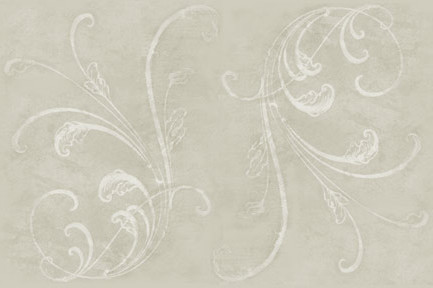


 His book discusses the difficult situation of royal finances at the end of the reign of Louis XIV, and how the king was forced to turn to Nicolas Desmaretz, a man who had been dismissed from the royal government in 1683 following the death of his uncle, the great Colbert.
His book discusses the difficult situation of royal finances at the end of the reign of Louis XIV, and how the king was forced to turn to Nicolas Desmaretz, a man who had been dismissed from the royal government in 1683 following the death of his uncle, the great Colbert.










